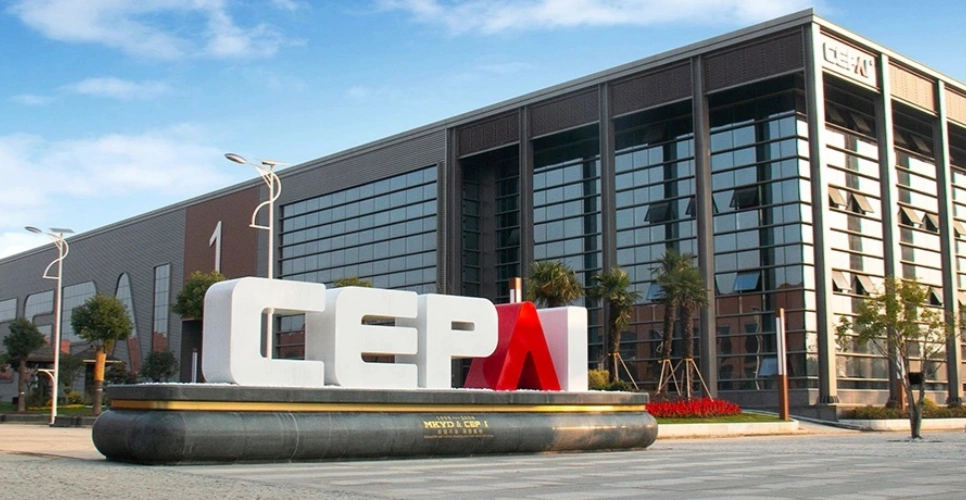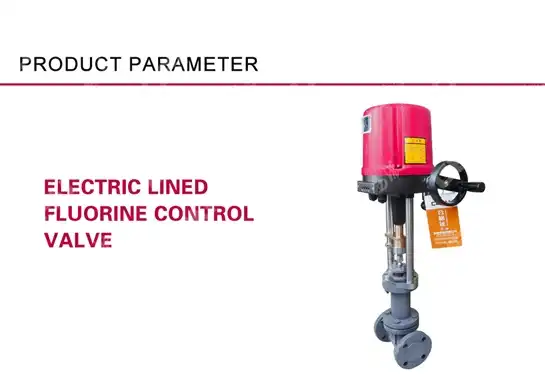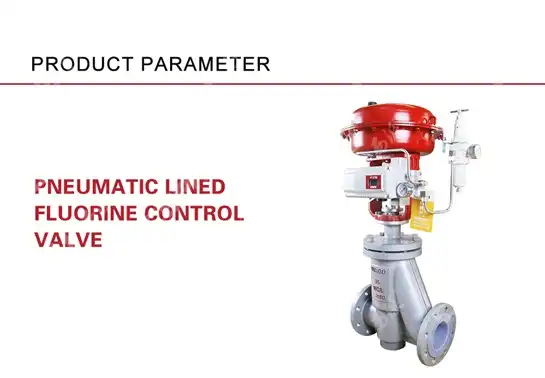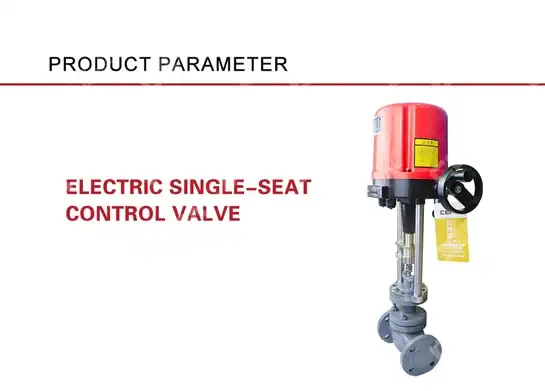A Guide to Pneumatic High-Temperature Control Valves
When industrial operations encounter extreme temperature challenges above 1000°F (538°C), conventional control systems often fail catastrophically, resulting in costly downtime, safety hazards, and production losses. The solution lies in understanding and implementing specialized pneumatic high-temperature control valves that can withstand these harsh conditions while maintaining precise flow control. This comprehensive guide explores the critical aspects of pneumatic high-temperature control valve technology, from selection criteria and material considerations to installation best practices and maintenance strategies, providing engineers and plant managers with the essential knowledge needed to ensure reliable operation in the most demanding thermal environments.
Understanding Pneumatic High-Temperature Control Valve Technology
-
Fundamental Operating Principles
Pneumatic high-temperature control valves operate on the principle of using compressed air to actuate valve mechanisms that regulate fluid flow in extreme temperature environments. These sophisticated devices combine pneumatic actuators with specially designed valve bodies capable of withstanding temperatures ranging from 800°F to 1500°F (427°C to 815°C) while maintaining precise control capabilities. The pneumatic actuation system provides several advantages in high-temperature applications, including inherent fail-safe operation, rapid response times, and reduced risk of electrical component failure in extreme thermal conditions. The key to successful pneumatic high-temperature control valve operation lies in the integration of heat-resistant materials, advanced sealing technologies, and specialized actuator designs that can compensate for thermal expansion and maintain consistent performance across wide temperature ranges.
-
Design Considerations for Extreme Temperature Applications
The design of pneumatic high-temperature control valves requires careful consideration of thermal expansion, material compatibility, and actuator positioning to ensure reliable operation. Extended stuffing box designs are commonly employed to move critical sealing components away from high-temperature zones, while finned bonnets and heat dissipation features help protect pneumatic actuators from excessive thermal exposure. Valve bodies are typically constructed from specialized alloys such as CF8 stainless steel or higher-grade materials for applications exceeding 1350°F. The pneumatic actuator must be sized to accommodate increased operating forces due to thermal effects and potential changes in fluid viscosity at elevated temperatures. Additionally, spring-loaded seat designs are often incorporated to compensate for thermal expansion and maintain tight shutoff capabilities throughout the operating temperature range.
Materials and Construction Standards for High-Temperature Performance
-
Advanced Metallurgy and Material Selection
The selection of appropriate materials is crucial for pneumatic high-temperature control valve performance and longevity. For temperatures between 1025°F and 1350°F, CF8 stainless steel from the ASTM A351 family provides excellent corrosion resistance and thermal stability. Applications exceeding 1350°F require specialized superalloys or exotic materials such as Hastelloy, Inconel, or other nickel-based alloys that maintain their mechanical properties at extreme temperatures. The valve trim, including seats, plugs, and guide bushings, must be manufactured from materials that resist galling, maintain dimensional stability, and provide consistent sealing performance across temperature cycles. Pneumatic high-temperature control valves often incorporate reinforced PTFE seals with metal backup systems or utilize all-metal sealing designs for the most extreme temperature applications.

-
Quality Assurance and Testing Standards
Manufacturing pneumatic high-temperature control valves requires adherence to stringent quality standards including API 602, API 6A, API 6D, and various ASTM specifications. Each valve component undergoes rigorous material analysis to verify composition and mechanical properties, while dimensional inspections ensure proper fit and function at operating temperatures. Pressure testing at elevated temperatures validates the valve's ability to maintain integrity under combined thermal and mechanical stress. Advanced manufacturing facilities employ computerized testing systems that simulate actual operating conditions, including thermal cycling tests that verify the valve's performance through repeated heating and cooling cycles. The manufacturing process incorporates strict process inspection protocols throughout production, with final testing conducted according to customer specifications or international standards before shipment.
Application Areas and Industry Requirements
-
Industrial Process Applications
Pneumatic high-temperature control valves find critical applications across numerous industrial sectors where precise flow control at elevated temperatures is essential. In petrochemical facilities, these valves regulate flow in steam cracking units, fluid catalytic cracking processes, and high-temperature reactor systems. Power generation facilities utilize pneumatic high-temperature control valves for steam turbine bypass systems, superheated steam control, and feedwater heating applications. Steel and metallurgical industries depend on these valves for blast furnace operations, continuous casting processes, and heat treatment systems. Chemical processing plants employ them in high-temperature polymerization reactors, distillation columns, and thermal oxidation systems where maintaining precise temperature and flow control is crucial for product quality and safety.
-
Safety and Regulatory Compliance
The implementation of pneumatic high-temperature control valves must comply with various safety standards and regulations including NACE MR-01-75 for sour service applications, ASME pressure vessel codes, and specific industry standards for hazardous area classifications. These valves often require SIL (Safety Integrity Level) certification for critical safety applications, ensuring reliable operation when process safety depends on proper valve function. Emergency shutdown capabilities are typically integrated into pneumatic high-temperature control valve systems, providing fail-safe operation that automatically positions the valve to a predetermined safe state upon loss of pneumatic supply or control signal. Regular safety inspections and maintenance procedures are mandated by regulatory bodies to ensure continued compliance and safe operation throughout the valve's service life.
Selection Criteria and Performance Optimization
-
Engineering Specifications and Sizing
Proper selection of pneumatic high-temperature control valves requires comprehensive analysis of process conditions including maximum and minimum operating temperatures, pressure ratings, flow characteristics, and fluid properties at elevated temperatures. The valve sizing methodology must account for changes in fluid density and viscosity at high temperatures, which can significantly affect flow capacity and control characteristics. Actuator sizing calculations must consider increased stem forces due to thermal effects, packing friction at elevated temperatures, and potential process upsets that may require rapid valve positioning. The pneumatic supply system must be designed to provide adequate air flow and pressure to ensure reliable actuator operation, with consideration for potential air line heating in high ambient temperature environments.
-
Control System Integration

Modern pneumatic high-temperature control valves integrate seamlessly with digital control systems through advanced positioners and feedback devices designed for high-temperature service. These intelligent positioners provide precise valve positioning, diagnostic capabilities, and communication with distributed control systems through various protocols including HART, Foundation Fieldbus, and Profibus. Temperature compensation algorithms built into modern positioners automatically adjust for thermal effects on valve performance, maintaining consistent control loop response across the operating temperature range. Remote monitoring capabilities enable operators to track valve performance, predict maintenance requirements, and optimize process control parameters without exposing personnel to high-temperature environments.
Installation and Maintenance Best Practices
-
Installation Guidelines and Procedures
Proper installation of pneumatic high-temperature control valves requires careful attention to thermal management, piping supports, and actuator protection. Valve installation must include provisions for thermal expansion in connected piping systems, typically through expansion joints or flexible connections that prevent thermal stress from affecting valve operation. Insulation systems should be designed to protect pneumatic actuators and control components from excessive heat while maintaining accessibility for maintenance operations. Air supply lines must be routed away from high-temperature sources and may require heat tracing in cold environments to prevent condensation and freezing. Pre-installation testing should verify proper valve operation, actuator calibration, and control system integration before the system is brought to operating temperature.
-
Preventive Maintenance and Troubleshooting
Effective maintenance of pneumatic high-temperature control valves requires specialized procedures adapted for high-temperature service conditions. Regular inspection schedules must account for accelerated wear rates at elevated temperatures, with particular attention to sealing elements, actuator components, and control system devices. Thermal cycling effects on valve components necessitate more frequent calibration checks and adjustment of control parameters to maintain optimal performance. Predictive maintenance techniques including vibration analysis, thermographic inspection, and performance trending help identify potential issues before they result in system failures. Maintenance personnel require specialized training in high-temperature safety procedures and proper use of protective equipment when working on these systems.
Conclusion
Pneumatic high-temperature control valves represent a critical technology for industries operating in extreme thermal environments, requiring specialized design, materials, and maintenance approaches to ensure reliable performance and safety compliance.
Cooperate with CEPAI Group Co., LTD.
When selecting a China Pneumatic High-Temperature Control Valve factory, CEPAI Group Co., LTD. stands as your premier China Pneumatic High-Temperature Control Valve supplier and China Pneumatic High-Temperature Control Valve manufacturer. Established in 2009 with 200 million yuan registered capital and certified as a national high-tech enterprise, CEPAI offers comprehensive solutions from our 56,000 square meter facility. As a leading China Pneumatic High-Temperature Control Valve wholesale provider, we maintain API Q1, API 6A, ISO 9001 certifications and offer competitive Pneumatic High-Temperature Control Valve price options. Our High Quality Pneumatic High-Temperature Control Valve products feature advanced intelligent manufacturing and serve major clients including PetroChina, Sinopec, and CNOOC. For premium Pneumatic High-Temperature Control Valve for sale with exceptional technical support, contact us at cepai@cepai.com.
References
1. "High Temperature Valve Technology and Materials Selection" - Smith, J.R., American Society of Mechanical Engineers
2. "Pneumatic Control Systems in High Temperature Applications" - Johnson, M.K., Institution of Mechanical Engineers
3. "Advanced Materials for Extreme Temperature Valve Applications" - Chen, L.W., Materials Science and Engineering Journal
4. "Industrial Valve Design and Testing Standards" - Anderson, P.T., American Petroleum Institute Technical Publications

Get professional pre-sales technical consultation and valve selection services, customized solution services.

About CEPAI


